Scarier than death: How virtual reality is tackling the fear of public speaking
Speech Center VR wants to help you be a more confident speaker
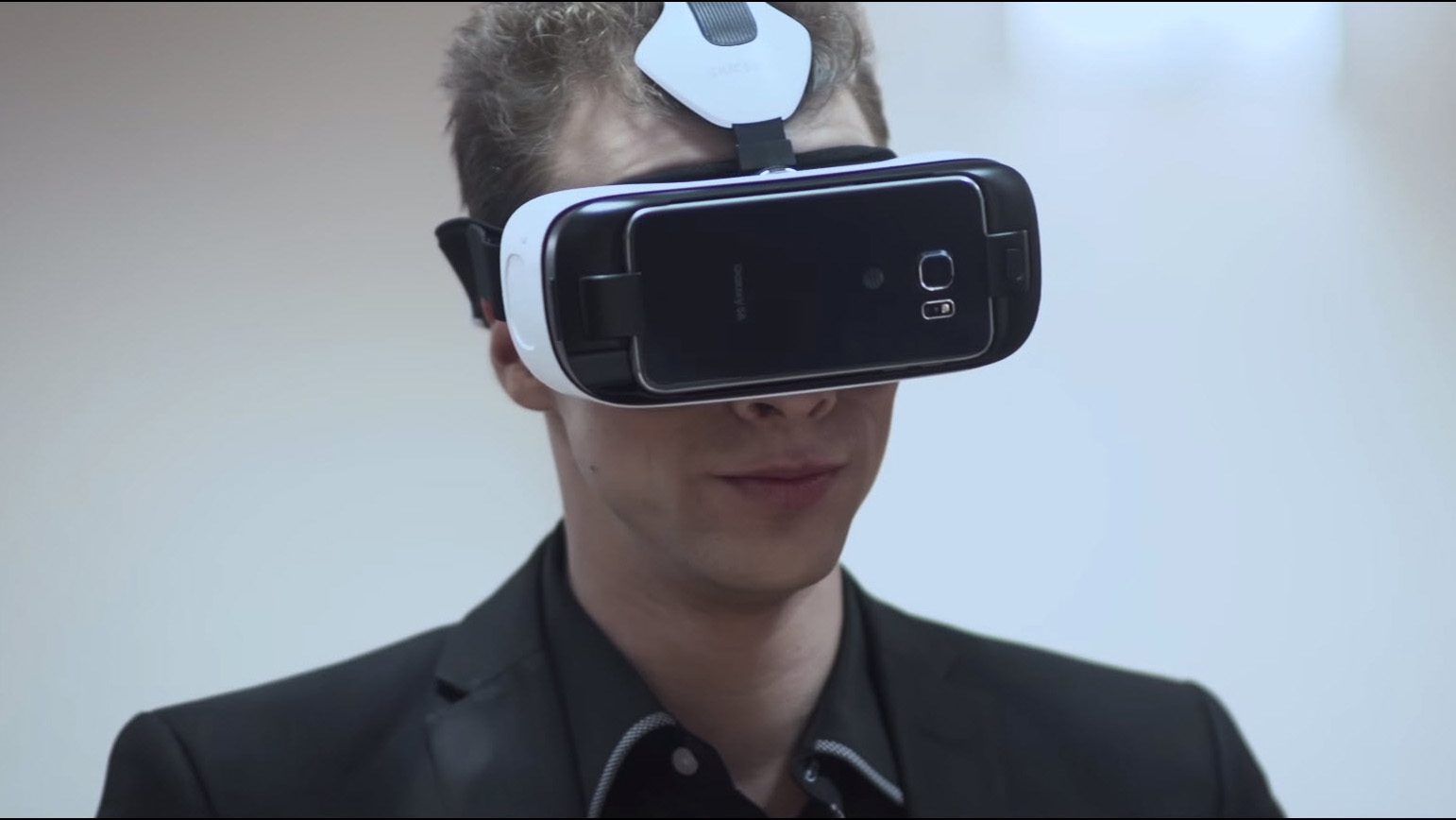
The forest is on fire. Flames lick at the trees surrounding me, pouring smoke into the atmosphere. I look for an escape, but I'm trapped.
There are three rows of people sitting around me, with hands in their laps, patiently waiting. Don't they see the flames?
I whip around and there's a huge screen in front of me with a PowerPoint presentation that I'm supposed to give. I begin speaking, ignoring the burning forest. Soon, the trees and fire become irrelevant. My unflinching audience becomes irrelevant. I'm nailing this presentation.

Being trapped in a fiery forest is just one of the scenarios used to simulate a high-stress environment in Speech Center VR, a Samsung Gear VR exclusive. You can choose to practice public speaking in more typical settings too, such as a lecture hall or boardroom, but perhaps a burning forest is the most effective at inducing anxiety.
Developed by virtual reality startup Cerevrum, Speech Center VR aims to help people conquer their fear of public speaking with lessons, practice, and interaction. But why tackle public speaking first, as opposed to any other phobia?
"We were shocked that knowing the greatest fear is the fear of public speaking. It's greater than [the fear of] death," Olga Peshe, chief operating officer at Cerevrum, tells TechRadar during a recent demonstration of the app.
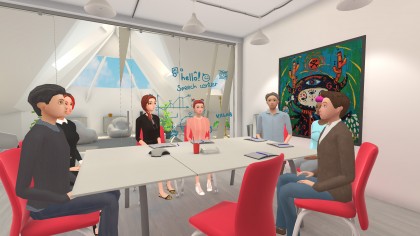
Americans' biggest phobia is in fact the fear of public speaking, according to the Chapman University Survey on American Fears (via The Washington Post), with 25.3% of participants saying they feared speaking in front of a crowd. More Americans are afraid of public speaking than they are of heights, bugs, or even drowning.
Get daily insight, inspiration and deals in your inbox
Sign up for breaking news, reviews, opinion, top tech deals, and more.
The fear of public speaking, also known as glossophobia, is so widespread because of how much it's required in our jobs and daily lives. From sales reps introducing a product to students giving a presentation in the classroom, just about everyone relies on their public speaking skills.
Speech Center VR hopes to help people overcome glossophobia as their first venture into VR therapy and education since it's such a universal fear.
"We're trying to make this as pragmatic as possible and to solve business problems," says Zach Henry, Cerevrum's chief growth officer.
From the boardroom to a candle-lit dinner
The business world may be the most obvious place for Cerevrum's tech, but the company thinks Speech Center VR's killer utility will be as a dating course.
"We want to help people be more confident," says Peshe, and the app will include virtual environments like a candle-lit dinner table in a restaurant to do just that.

While Speech Center VR's visuals are quite basic, it didn't stop me from feeling like I was in the settings I saw. The avatars in the app look sort-of like characters you'd find in The Sims, with brightly colored eyes and an empty stare. More realistic graphics would surely help Speech Center VR feel more immersive, but it'd require much more powerful hardware than a mobile phone can provide, at least right now.
"We're in love with mobile VR," Peshe says, noting it gives people the chance to train wherever they go. Speech Center VR is only available on the Samsung Gear VR, which is a shame as I think the more accurate tracking of the Oculus Rift - and its future hand controller support - would elevate its immersion.
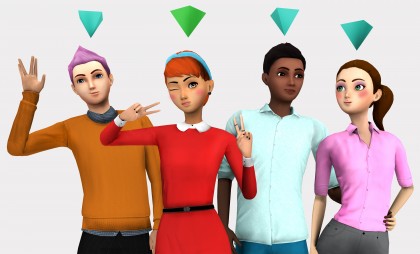
I also think that eye tracking technology would go along way for training eye contact, something that none of the VR headsets on the market offer just yet. Speech Center VR works around this limitation by having the avatars start browsing on their phones and looking bored if you face away from them for too long.
Real-world connections
While the app's environments are virtual, you'll also be able to interact with real humans using the app. I got to sit down in a virtual conference room with my fiancée, who was physically in another room, to have a serious business negotiation about where we were going for lunch.
Audio was loud and clear using headphones, and the latency was minimal. I was surprised at how real it all felt. Having a virtual environment to meet in made the conversation feel a lot more natural than a simple phone or video call.
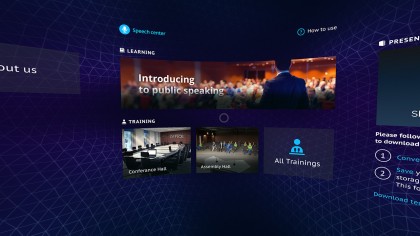
I found myself instinctively wanting to wave to my fiancée since the interaction felt so natural, but, alas, the Gear VR doesn't offer hand tracking. Instead, I tapped on the back button on my headset to bring up a menu to select from a series of pre-configured reactions, such as laughing and smiling.
May I have your undivided attention?
One of the reasons Speech Center VR is so compelling is that it requires your full attention. While students in a real lecture hall can browse Facebook or text, you can only concentrate on practicing and learning to be more confident.
Cerevrum hopes to have certified speech trainers give public speaking courses to Speech Center VR users starting this September. The app can support up to 1,000 people at a time for a massive open online course.
One of the app's neatest features is its ability to record your presentations and upload them to the cloud, so you can listen and share with people in your company.
"In some cases, the senior staff is so busy that they don't have time to listen to a pitch deck," says Henry. "So one of the functions [is] a junior staffer can record their deck in VR and forward that to senior staff to watch later. Nothing can replace person-to-person contact, but there's certainly room to use VR to ease the pain of road warriors."
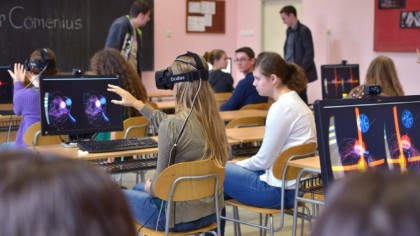
In my demo, the audio recorded from Speech Center VR played clearly from the cloud - I cringed as I heard my own voice giving a mock presentation.
Cerevrum hopes to monetize Speech Center VR by offering courses, more environments, and online storage for presentations. The company hasn't nailed down the app's pricing yet, so time will tell if it's affordable.
Fears overcome?
Virtual reality therapy isn't anything new. Its first trials were documented in the mid-1990s with the US Army's financial support. Even though VR technologies from 20 years ago pale in comparison to what we have today, studies showed that VR therapy was 90% successful in helping participants get over their fear of heights.
More recently, a 2006 study performed by professors from the University College London and King's College London showed that low fidelity visuals were still effective in generating anxiety from patients. Speech Center VR's visual are definitely low fidelity when compared to the visuals of PC-driven VR games, but that didn't make the experience any less effective.
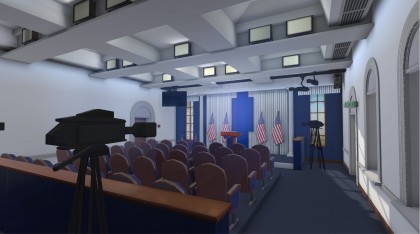
Although I still felt some nervousness presenting in front of a room full of virtual avatars, I would've probably felt more nervous in front of a live audience. This will change with the introduction of live classes as well as one-on-one training with a speech trainer as you'll know real people are listening and ready to provide feedback and criticism. Even without a live audience, I felt more comfortable giving my mock presentation at the end of my hour-long demo than I did at the start.
There isn't a lot of new research on the merits of virtual therapy, but that'll start to change now that VR is much more accessible. With Speech Center VR, anyone with a Samsung Galaxy phone and Gear VR headset can tackle glossophobia from the comfort of home, or even on the road.
Sure, the experience could be a lot more immersive, but having the ability to take these speech courses wherever you are is invaluable.
Games and entertainment are just the beginning for virtual reality, and Speech Center VR proves that virtual reality can be a powerful platform for education and therapy.
Top phone credit: Cerevrum
- Our 5-star review of the HTC Vive
